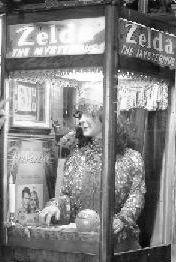题目链接:http://acm.hdu.edu.cn/showproblem.php?pid=3153


Case n: nn pencils for nn cents nn at four cents each nn at two for a penny nn at four for a penny
10 20 40 0
Case 1: 10 pencils for 10 cents No solution found. Case 2: 20 pencils for 20 cents 3 at four cents each 15 at two for a penny 2 at four for a penny Case 3: 40 pencils for 40 cents 6 at four cents each 30 at two for a penny 4 at four for a penny 7 at four cents each 15 at two for a penny 18 at four for a penny
代码如下:
#include<cstdio>
int main()
{
int n;
int flag;
int cas = 0;
while(scanf("%d",&n)&&n)
{
double sum = n*1.0;
flag = 0;
printf("Case %d:\n",++cas);
printf("%d pencils for %d cents\n",n,n);
for(int i = 1; i < n; i++) //1
{
for(int j = 1; j < n; j++) //2
{
for(int k = 1; k < n; k++) //3
{
if(sum==i*4+j*0.5+k*0.25 && i+j+k==n)
{
flag = 1;
printf("%d at four cents each\n",i);
printf("%d at two for a penny\n",j);
printf("%d at four for a penny\n\n",k);
}
}
}
}
if(!flag)
printf("No solution found.\n\n");
}
return 0;
}HDU 3153 Pencils from the 19th Century(数学题)
原文地址:http://blog.csdn.net/u012860063/article/details/39857405